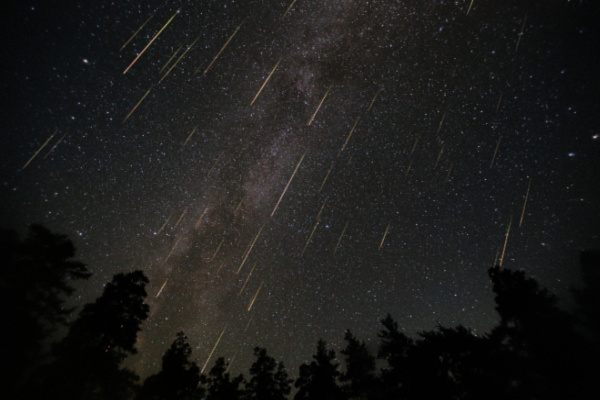Astronomers are saying that August will be one of the best months for stargazing in 2024, as it will offer the perfect blend of comfortable summer nights and enticing astronomical sights for people of all ages.
From a rare blue moon to stunning sights of Saturn, here are the three astronomy events you won’t want to miss in August:
Aug. 11-12: Perseid meteor shower
The Perseids is often touted as the best meteor shower of the year and will put on a dazzling display as it peaks on the night of Sunday, Aug. 11 into the early hours of Monday, Aug. 12.
The annual August event boasts over 60 meteors per hour, second only to December’s Geminids, which can generate over 100 shooting stars per hour. However, the weather is typically more comfortable and less cloudy for stargazers in August compared to December’s long, cold nights.
Onlookers may start to see meteors streak through the sky shortly after nightfall, but the best time to watch will be after 1 a.m., local time, according to the American Meteor Society.
Aug. 19: Blue Moon
A blue moon will rise during the third week of the month, and while the moon won’t actually appear blue, its name adds a touch of intrigue to this celestial event. This won’t be a typical blue moon, either.
Usually, the term “blue moon” refers to the second full moon to rise in a calendar month, an occurrence that takes place once every two or three years. However, the upcoming event will be a seasonal blue moon.
Most seasons feature three full moons, but occasionally, like this summer, there are four. The third full moon in such a rare sequence is called a blue moon. After August, the next seasonal blue moon will occur on May 20, 2027.
August’s full moon is also known as the Sturgeon Moon, Corn Moon, Mountain Shadows Moon and Black Cherries Moon.
Aug. 20: Moon and Saturn
One night after taking center stage in the sky, the moon will again be the focus of attention as it swoops past an easy-to-see planet.
Saturn will rise just above the nearly full moon shortly after nightfall on Tuesday, Aug. 20. The duo will shine side by side all night long, creating a perfect event for both amateur and seasoned astronomers.
As an added bonus, Neptune will hang just below and to the left of the moon and Saturn. However, the distant world is too faint to see with the unaided eye, so folks hoping to catch a glimpse of Neptune will need a telescope.
—
Photo Credit: Makarov Konstantin / Shutterstock.com
